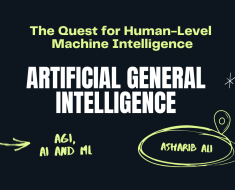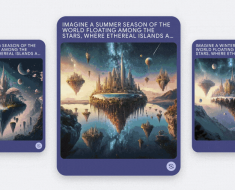
from the understanding-creativity-and-art dept
The attacks on generative AI started out claiming that it was all about protecting the creators whose works were being “stolen” in some mysterious way by virtue of software analyzing them. In some cases, that high-minded stance has already degenerated into yet another scheme to pay collecting societies even more for doing next to nothing. But beyond all this unseemly squabbling, there is a much deeper and more interesting question. It concerns not what goes into generative AI systems, but what comes out.
Generative AI finds subtle patterns in the works it analyzes, which it then uses to create new material, guided by the prompts that are provided by users. Some want to call that “theft”, but it’s a key element of all human creativity too. A fine post by Mike Loukides on the O’Reilly site acknowledges this, and goes on to make an important point:
It’s naive to say that creativity isn’t partly based on the work of predecessors. You wouldn’t get Beethoven without the works of Haydn and Mozart. At the same time, you don’t get Beethoven out of the works of Haydn and Mozart. An AI trained on the works on Haydn and Mozart wouldn’t give you Beethoven; it would give you some (probably rather dull) amalgam, lacking the creativity of either Haydn or Mozart. Nor can you derive the Beatles by mixing together Chuck Berry and Little Richard, though (again) there are obvious relationships.
Loukides explains how this kind of creative borrowing occurs in all the arts:
While borrowing in literature is usually more covert than overt, T. S. Eliot famously said, “Immature poets imitate; mature poets steal; bad poets deface what they take, and good poets make it into something better, or at least something different. The good poet welds his theft into a whole of feeling which is unique, utterly different from that from which it was torn.”
And:
As in literature, copying in painting is usually covert rather than overt. Pablo Picasso also may have said “good artists copy, great artists steal,” joining Eliot, Wilde, and others. Copying paintings by great artists is still an exercise for aspiring artists – although most of us recognize that more paintings in the style of Vermeer aren’t interesting as works of art.
The examples mentioned by Loukides all underline the point that simply analyzing artistic works does not guarantee that the output will be art. In fact, there is already evidence that generative AI is struggling:
Creativity sets a high bar, and I don’t think AI meets it yet. At least one artist thinks that tools like Midjourney are being trained to favor photorealism, rather than originality. In “The Curse of Recursion,” a research group shows that generative AI that is trained on the output of generative AI will produce less surprising, original output. Its output will become pedestrian, expected, and mediocre, and that might be fine for many applications.
Rather than reflexively demanding a cut of what is likely to be very little revenue from the “pedestrian” and derivative material generated using AI, artists should see it instead as a superb advertisement for their unique creative skills that software algorithms simply can’t match.
Follow me @glynmoody on Mastodon. Originally published to Walled Culture.
Filed Under: ai, copying, copyright, creativity, culture, generative ai, homage, insipiration




